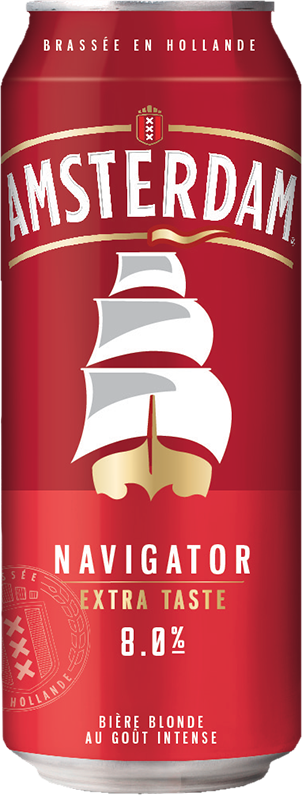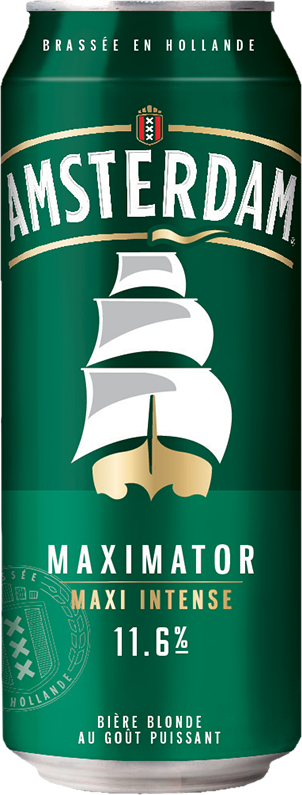

The secrets behind the brewing of Amsterdam beers
All the secrets of making our beers
Find out, step-by-step, about the traditional brewing methods used to brew Amsterdam, and understand the origins of this unique taste, loved by drinkers of beer with character.

The first step in the brewing process is malting
Malting is the first major stage in brewing a beer. Barley, one of the main ingredients, is not used in its natural form. Malting is a way of transforming barley so that the sugars in it can be extracted from the starch.
It then reaches the soaking stage which allows it to soften. The soaked grain is then moved on to the “germination room” before being dried and “oasted”. It is at this stage that the colour and malt aromas develop, giving the final product its colour, taste and intensity.
Amsterdam uses a Dutch aromatic malt, which gives it its golden colour and caramelised nut aroma.
The second stage is the brewing of the beer.
Brewing is the main stage in the production of beer. The malt flour is mixed with water and heated to end the transformation of starch to sugar. The thick mixture is then filtered: Only the sugary juice remains. This will be used as the base for the beer.
The sugar in the mixture is the starting point for the fermentation of the yeast and therefore the alcohol content. Brewing at high temperatures will produce more glucose and therefore a more alcoholic beer.
This sugary liquid, called “wort” is then brought to the boil before the hops are added. Amsterdam brewers use two varieties of hops: Magnum and Hercules. The former brings a fruity note to the characterful taste whilst the latter gives it a slight bitterness.
Next comes the fermentation…
The alcohol is produced during fermentation through the action of the yeast. The brewer then has two choices to make: Top- or bottom- fermentation? The temperatures used in the two methods are different, and therefore, so is the choice of yeast to be used.
Amsterdam is a bottom-fermented beer. The yeast attacks the sugars in the wort, thus producing the alcohol. The key to the production of Amsterdam beers is dynamic fermentation, lasting between 7 and 10 days. The wort is moved mechanically to ensure the yeast uses all the sugars to arrive at the desired alcohol content without the use of additives.
Then the beer is matured.
Amsterdam beer will be ready soon! After the fermentation phase, the liquid is kept in a conditioning tank for several weeks at a temperature of 0°. The yeast finishes its work and the beer takes on all its flavours and aromas. The remaining suspended particles fall to the bottom of the tank, resulting in a clearer beer. It is then filtered to give it its brightness and get rid of the last particles. It is during filtration that the natural rum flavouring is added to Black Rum, giving it its distinctive character.
Canning
Clear, bright and flavourful: Amsterdam beer is ready to be canned!



